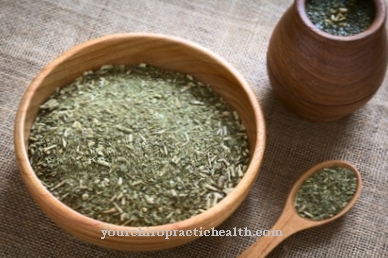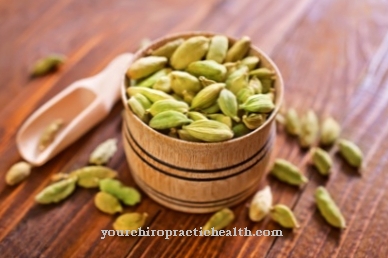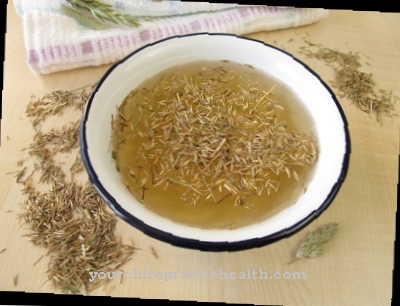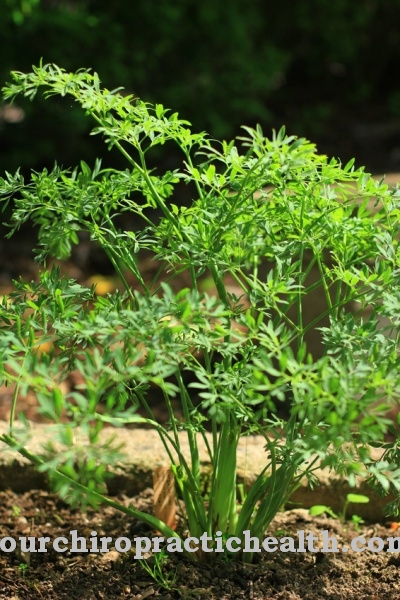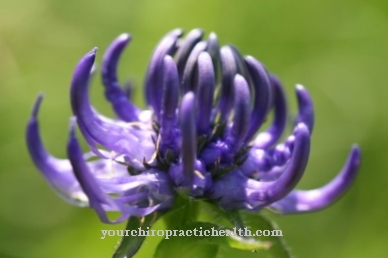The mint family Orthosiphon, also under the name Cat beard known, is a herbaceous or semi-shrubby plant genus that is mainly native to some tropical regions of Asia, Africa and Australia. Secondary ingredients like triterpenes, flavonoids and saponins are known to be diuretic and anti-inflammatory. Tea made from the leaves is also known as Indian kidney tea and is recommended for inflammation and infections of the lower urinary tract and for the treatment of small, grainy kidney stones (kidney gravel).
Occurrence & cultivation of the Orthosiphon

Orthosiphon establishes a perennial, herbaceous to semi-shrubby plant genus with a stature height of up to 80 centimeters. Orthosiphon belongs to the mint family with around 45 known species. The long, curved stamens that protrude laterally from the flowers have given it the name cat's beard, which is common in Germany.
The terminal flowers, arranged in panicles or spikes, and the leaves exude a characteristic, weakly aromatic fragrance, which is due to the essential oils they contain. The main distribution areas of Orthosiphon are tropical regions of Asia and Africa and northeastern Australia. The occurrence of most species is limited to certain regions with a few exceptions.
For example, the range of species such as Orthosiphon adenocaulis, biflorus and a few others is limited to Madagascar, while Orthosiphon aristatus can be found throughout tropical Asia, northern Australia and even subtropical regions of Asia. Orthosiphon is mainly cultivated in Australia, Indonesia, and countries such as Vietnam and Georgia.
The reason for the cultivation of the plant lies in the health-related secondary ingredients, which are recommended, among other things, for the treatment of bacterial inflammation of the lower urinary tract and for flushing out kidney gravel, grain-like kidney stones.
Effect & application
The way Orthosiphon works is not based on the effect of a specific individual component, but - as with most other medicinal plants - on the overall effect of the various ingredients in the compound. Orthosiphon has a lot to offer in terms of its ingredients. In addition to various flavonoids, caffeic acid derivatives and essential oils, which contain terpenes, tri- and diterpenes and sesquiterpenes, the high content of potassium salts is of particular relevance.
Potassium is of particular importance in regulating the fluid balance and has an impact on the function of muscles and nerves as well as on the heart rhythm. Potassium deficiency can trigger symptoms as diverse as fatigue, muscle cramps, constipation, headaches, dizziness and even irregular heartbeat.
Orthosiphon also has an antibacterial, antifungal, anti-inflammatory and antispasmodic effect. For example, the contained flavonoids sinensetin and eupatorin inhibit inflammatory enzymes, so that an anti-inflammatory effect occurs. Synthetic diuretics harbor the risk of impairing the functioning of the electrolyte balance by flushing out the electrolytes - especially potassium.
This danger does not exist with Orthosiphon, as the corresponding minerals are reabsorbed or, in the case of potassium, are also supplied in sufficient quantities. The health-relevant ingredients are mainly contained in the leaves of the plant, so that the simplest application in the preparation of a tea consists of the leaves of the cat's beard.
In some Eastern cultures, the effects of tea have been known for centuries and are used to treat kidney and bladder ailments. In German usage, tea made from orthosiphon leaves is also known under the name of Indian kidney tea or Java tea. An average daily dose of six to twelve grams is recommended for acute symptoms.
This corresponds to about three to six cups of tea with two to three teaspoons of the dried and crushed leaves per cup. The dried leaves are poured with boiling water and the tea should steep for five to twenty minutes. So that the tea keeps the heat, it can be covered or steeped in a thermos.
A total of three to six cups should be drunk throughout the day. Orthosiphon is also available as a tincture and in the form of drops, tablets, capsules and globules. Combination preparations are also available in which Orthosiphon is combined with birch leaves and goldenrod or other herbal ingredients.
Importance for health, treatment & prevention
The special importance of Orthosiphon for health lies in the fact that no undesirable side effects are known to date. However, due to the lack of available studies and experience, pregnant women and children should refrain from using Orthosiphon. The same goes for people with edema that is due to impaired kidney or heart function.
People whose symptoms worsen during treatment or who have blood in their urine should also see their doctor to clarify. Because of the “flushing effect”, adequate hydration should be ensured in another suitable manner during the tea cure or the taking of Orthosiphon. Orthosiphon has proven to be particularly suitable for the treatment of bacterial inflammation of the kidneys, bladder and ureters as well as the mucous membranes within the entire urogenital tract.
In addition to the targeted treatment of infections of the lower urinary tract, “flushing the body” with tea made from orthosiphon leaves also provides a general health component in the flushing out and removal of any harmful substances and toxins from the body. For people with an increased risk of developing a kidney stone or several small kidney stones (kidney gravel), Orthosiphon offers a good way of prevention.
The best protection against the formation of a new urinary stone is offered by regular tea consumption, which should be combined with plenty of fluid intake, reduced protein intake and enough exercise. In the case of acute complaints, however, preventive measures cannot replace a visit to the doctor.

